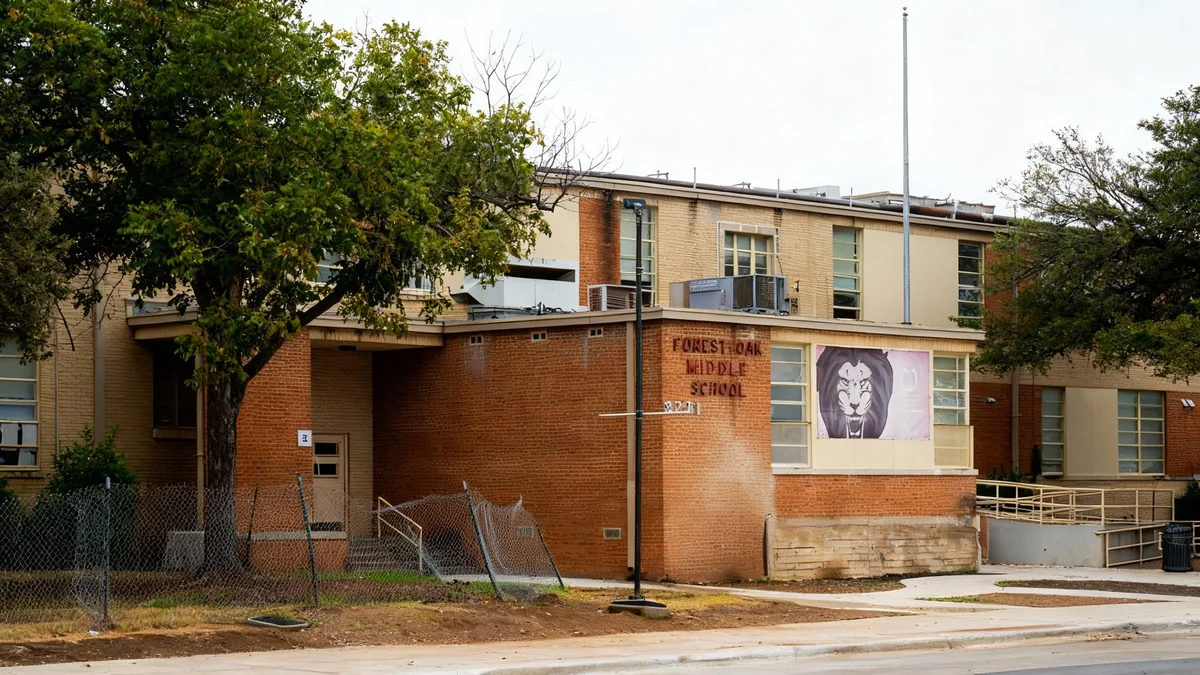The U.S. Department of Education is experiencing a new round of significant staff layoffs, further reducing its workforce. These cuts follow previous reductions during the Trump administration. The layoffs threaten to disrupt vital programs and services across various educational sectors, including special education, civil rights enforcement, and after-school initiatives.
Key Takeaways
- The Education Department began laying off 466 staff members on Friday.
- These cuts represent a nearly 20% reduction in the agency's current workforce.
- The department's size has been reduced by more than half since January 20, when President Donald Trump took office.
- Critical offices, including those for special education and civil rights, are heavily impacted.
- Federal funding for low-income schools and after-school programs is also affected.
Federal Workforce Reductions Impact Education Sector
The Trump administration initiated the layoff of 466 employees at the Education Department. This action is part of broader government-wide reductions. These measures aim to increase pressure on Democratic lawmakers amid an ongoing federal shutdown. The latest cuts are substantial, decreasing the agency's workforce by nearly one-fifth.
Since President Donald Trump assumed office on January 20, the Education Department's staff has seen a reduction of over 50%. This ongoing trend aligns with the administration's stated goal of potentially restructuring or even eliminating the department. The impact of these layoffs extends across various critical functions of the agency.
Staffing Snapshot
- Initial Workforce (Jan. 20): Approximately 4,100 employees
- Post-Layoffs Workforce: Fewer than 2,000 employees
- Current Reduction: Nearly 20% of existing staff
- Overall Reduction since Jan. 20: More than 50%
Impact on Key Educational Programs
Union representatives indicate that the new layoffs will severely affect several core offices within the Education Department. The office responsible for implementing the Individuals with Disabilities Education Act (IDEA) is particularly hard hit. This federal law provides essential support for millions of students with disabilities in schools nationwide.
According to AFGE Local 252, a union representing over 2,700 department workers, nearly all staff members in the IDEA office, except a small number of top officials, are being terminated. This could significantly impede the federal government's ability to ensure compliance and support for students with special needs.
"The new reductions, on top of previous layoffs, will double down on the harm to K-12 students, students with disabilities, first generation college students, low-income students, teachers and local education boards," stated Rachel Gittleman, president of AFGE Local 252.
Civil Rights and Equity Initiatives Face Cuts
The Office for Civil Rights (OCR) is also experiencing an unspecified number of layoffs. The OCR plays a crucial role in investigating complaints of discrimination in schools and universities across the country. Reductions in this office could hinder its capacity to address civil rights issues and ensure equitable treatment for all students.
These cuts raise concerns about the federal government's oversight and enforcement capabilities in protecting student rights and promoting inclusivity within educational institutions.
Funding Oversight and Support Programs Affected
The layoffs are also targeting teams that manage the distribution of grant funding to schools nationwide. This includes the office overseeing Title I funding, which provides financial assistance to schools with high numbers or high percentages of children from low-income families. Title I funding is crucial for supporting educational programs in disadvantaged communities.
Another affected area is the team managing 21st Century Community Learning Centers. These centers are the primary federal funding source for after-school and summer learning programs. Such programs offer academic enrichment, youth development activities, and support services to students, especially those in high-poverty areas.
Broader Administrative Strategy
The current administration has outlined a plan to reallocate some of the Education Department's functions to other federal agencies. Earlier this summer, adult education and workforce programs began transitioning to the Department of Labor. Additionally, negotiations were underway to transfer the department's substantial $1.6 trillion student loan portfolio to the Treasury Department. These moves suggest a deliberate effort to decentralize or reduce the scope of the Education Department.
Support for College Access and HBCUs Also Impacted
The reductions extend to offices overseeing TRIO programs, which help low-income students pursue higher education. TRIO programs offer academic counseling, tutoring, and college preparation services to students from disadvantaged backgrounds, aiming to increase their access to and success in college.
Furthermore, an office that manages federal funding for Historically Black Colleges and Universities (HBCUs) is also being impacted. HBCUs are vital institutions that have historically provided educational opportunities for African American students. Cuts to the oversight of their federal funding could pose challenges for these institutions.
Concerns from Education Organizations
Education organizations across the country have widely condemned the new layoffs. Jodi Grant, Executive Director of the Afterschool Alliance, highlighted the indispensable role of the small team overseeing 21st Century Community Learning Centers.
"Firing that team is shocking, devastating, utterly without any basis, and it threatens to cause lasting harm," Grant said in a statement. She emphasized that while states design their own competitions for federal funding, the federal team's guidance and support are "absolutely essential."
Previous layoffs in March had already halved the department's staff, but some employees were rehired after officials recognized the cuts were too deep. The current round of layoffs further intensifies concerns about the department's capacity to fulfill its mission.
Legal Challenge to Layoffs
The American Federation of Government Employees (AFGE) and other national labor unions are legally challenging the government's latest layoffs. A lawsuit filed in San Francisco argues that the government's budgeting and personnel offices exceeded their authority by ordering agencies to implement layoffs in response to the shutdown.
The Trump administration, in a court filing, asserted that the executive branch holds broad discretion to reduce the federal workforce. It also argued that the unions could not demonstrate immediate harm from the layoffs, as employees would not be formally separated for another 30 to 60 days after receiving notice.
This legal battle underscores the significant tensions between the administration's efforts to downsize federal agencies and the concerns of employee unions and education advocates regarding the potential long-term consequences for students and schools nationwide.





